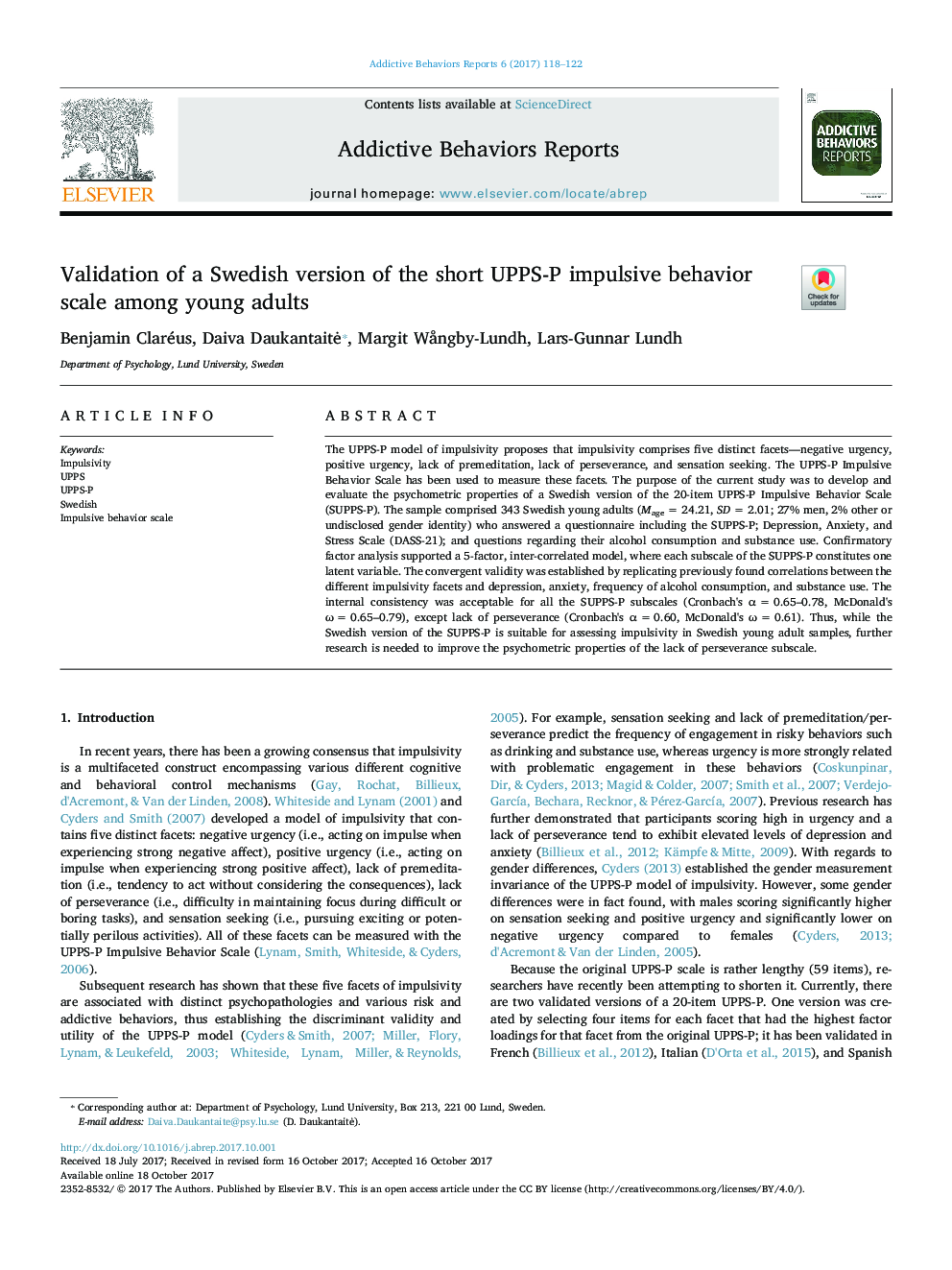| Article ID | Journal | Published Year | Pages | File Type |
|---|---|---|---|---|
| 7261369 | Addictive Behaviors Reports | 2017 | 5 Pages |
Abstract
The UPPS-P model of impulsivity proposes that impulsivity comprises five distinct facets-negative urgency, positive urgency, lack of premeditation, lack of perseverance, and sensation seeking. The UPPS-P Impulsive Behavior Scale has been used to measure these facets. The purpose of the current study was to develop and evaluate the psychometric properties of a Swedish version of the 20-item UPPS-P Impulsive Behavior Scale (SUPPS-P). The sample comprised 343 Swedish young adults (Mage = 24.21, SD = 2.01; 27% men, 2% other or undisclosed gender identity) who answered a questionnaire including the SUPPS-P; Depression, Anxiety, and Stress Scale (DASS-21); and questions regarding their alcohol consumption and substance use. Confirmatory factor analysis supported a 5-factor, inter-correlated model, where each subscale of the SUPPS-P constitutes one latent variable. The convergent validity was established by replicating previously found correlations between the different impulsivity facets and depression, anxiety, frequency of alcohol consumption, and substance use. The internal consistency was acceptable for all the SUPPS-P subscales (Cronbach's α = 0.65-0.78, McDonald's Ï = 0.65-0.79), except lack of perseverance (Cronbach's α = 0.60, McDonald's Ï = 0.61). Thus, while the Swedish version of the SUPPS-P is suitable for assessing impulsivity in Swedish young adult samples, further research is needed to improve the psychometric properties of the lack of perseverance subscale.
Keywords
Related Topics
Health Sciences
Medicine and Dentistry
Psychiatry and Mental Health
Authors
Benjamin Claréus, Daiva DaukantaitÄ, Margit WÃ¥ngby-Lundh, Lars-Gunnar Lundh,
